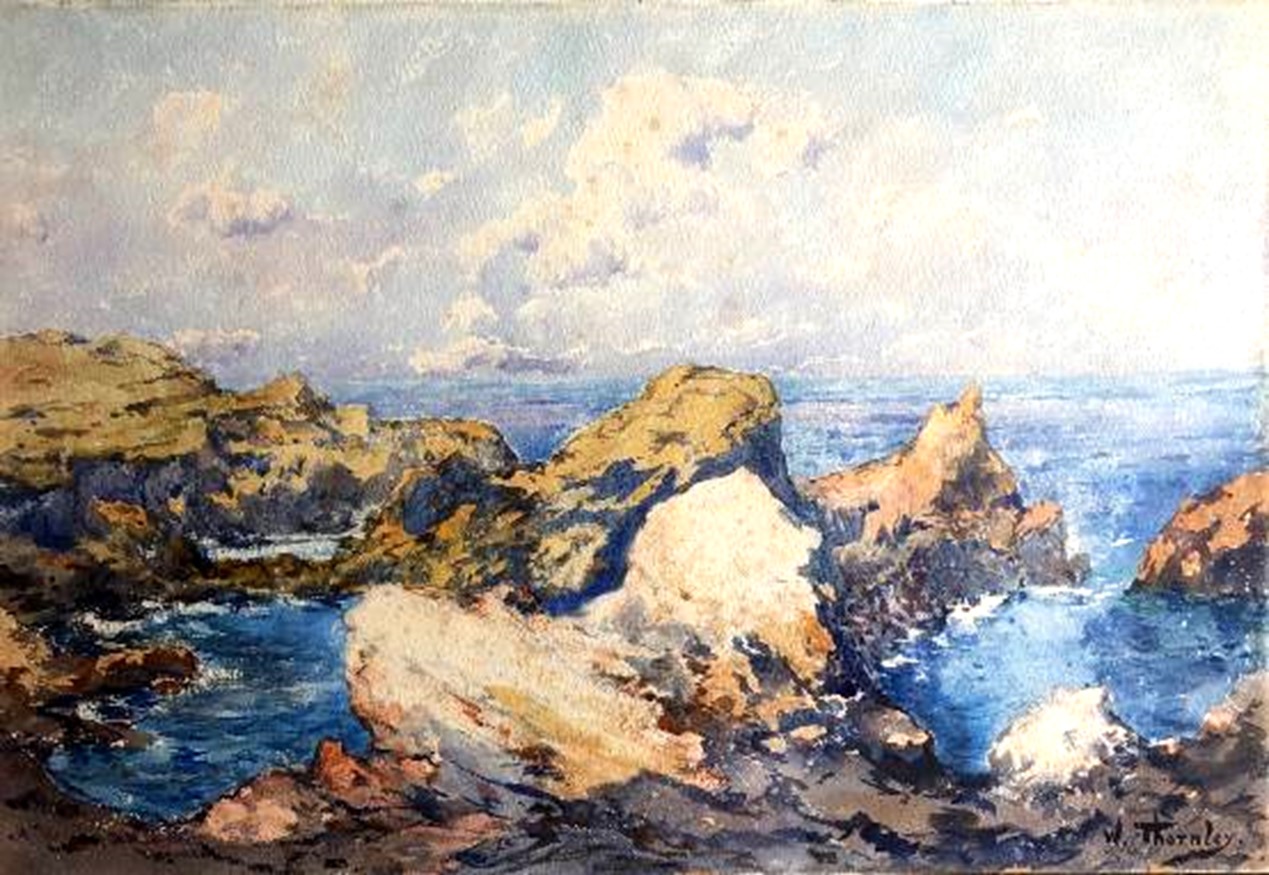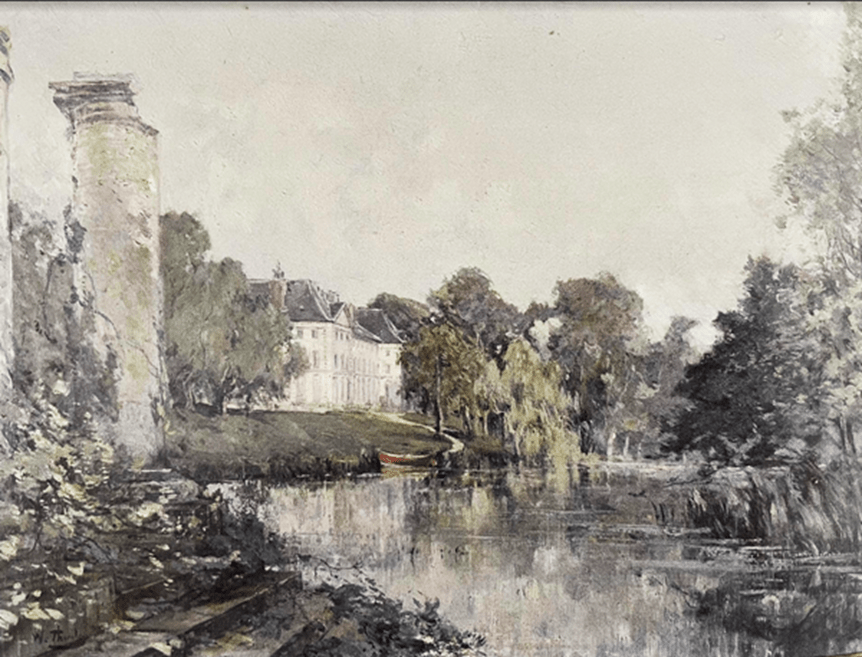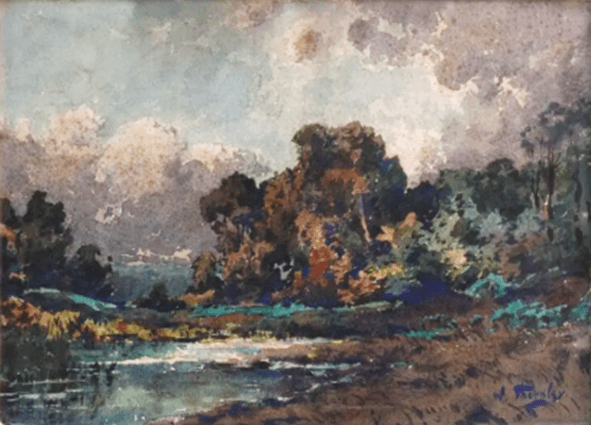Rochers au Phare du Paon (Ile de Bréhat)
Cette aquarelle a été réalisée en Bretagne, sur l’Ile de Bréhat (Côtes-d’Armor).
L’oeuvre peut être datée après 1900, peut être vers 1912.
Parmi les oeuvres réalisées par Thornley à Bréhat, figurent les titres suivants: Paysage de l’Ile de Bréhat, l’Ile de Bréhat, l’Ile de Bréhat à Marée basse, la place et l’église de l’ile de Bréhat (liste non exhaustive). Une autre aquarelle exécutée au même endroit porte le même nom : Rochers au phare du Paon (voir fiche 27).
L’artiste nous offre ici une vue saisissante des récifs et des enrochements situés de part et d’autres du phare du paon (*). Selon une légende bretonne, les deux fils de Meriadek, comte de Goëlo furent pétrifiés après avoir assassiné leur père. Le récit précise qu’en précipitant le cadavre à la mer, ils se sont transformés en rochers, le sang de leur père donnant sa couleur au granit.
Au-delà de cette épopée celtique sanglante, William Thornley a cherché à reproduire avec beaucoup d’intensité ces enrochements livrés à un ressac permanent. Les teintes utilisées pour les décrire, restituent cette couleur vibrante de la matière minérale exposée en permanence aux éléments d’une nature authentique et sauvage.
Voir aussi la fiche 101 « Vue de Bréhat » , la fiche 122 « Paysage de l’Ile de Bréhat », et la fiche 27 « Rochers au Phare du Paon »

the works produced by Thornley at Bréhat, the following titles appear: Landscape of the Island of Bréhat, the Island of Bréhat, the Island of Bréhat at low tide, the square and the church of the island of Bréhat ( non-exhaustive list). Another watercolor executed in the same place has the same name: Rocks at the Paon Lighthouse (see sheet 27).
The artist offers us here a striking view of the reefs and riprap located on either side of the Peacock Lighthouse (*). According to a Breton legend, the two sons of Meriadek, Count of Goëlo were petrified after having murdered their father. The story specifies that by throwing the corpse into the sea, they were transformed into rocks, their father’s blood giving its color to the granite.
Beyond this bloody Celtic epic, William Thornley sought to reproduce with great intensity these riprap exposed to a permanent undertow. The shades used to describe them restore this vibrant color of the mineral material permanently exposed to the elements of authentic and wild nature.



